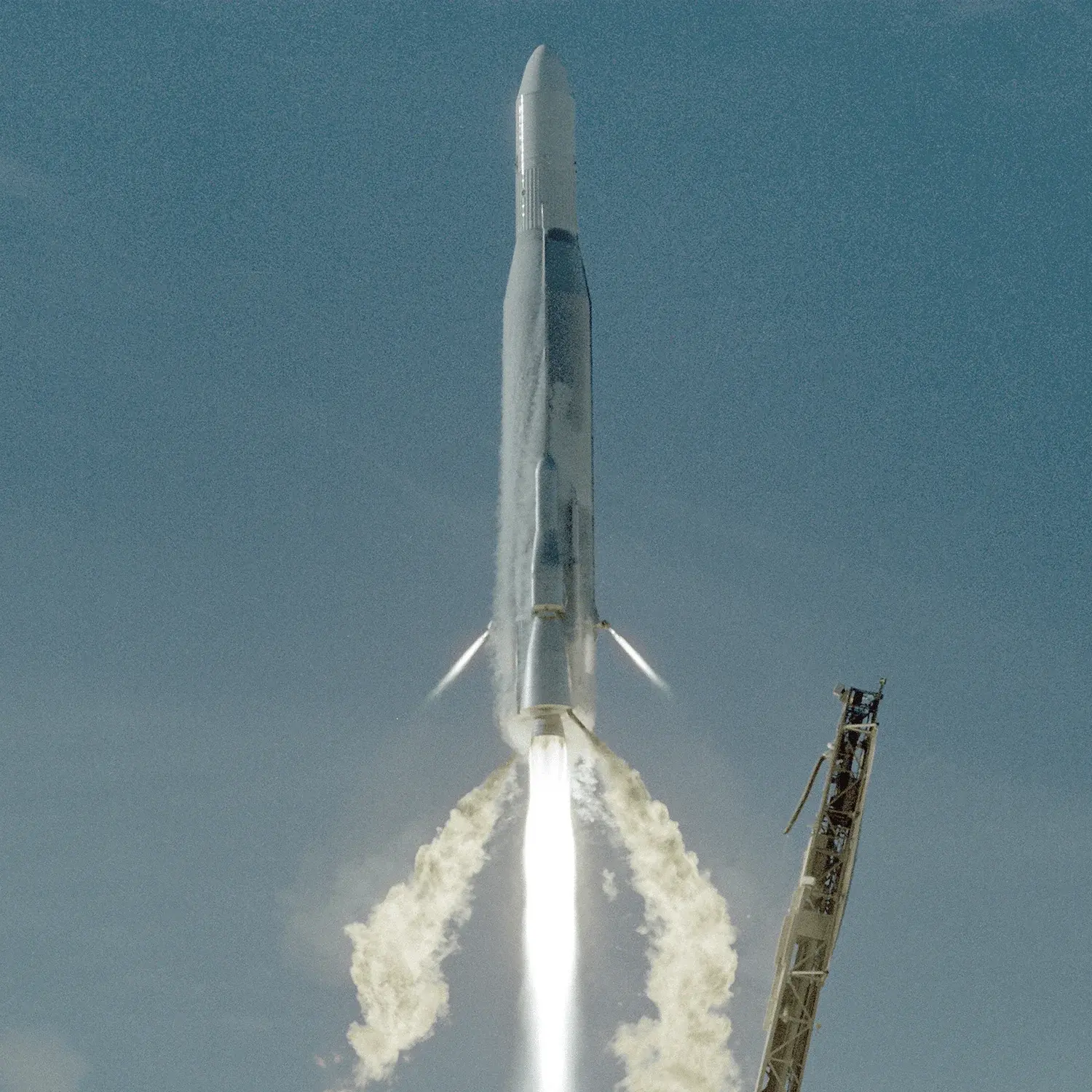MSD 4 & NOSS 4A to 4C & LIPS 1
Launch Failure
Liftoff Time (GMT)
07:18:00
Tuesday December 9, 1980
Mission Details
Launch Notes
Loss of turbopump lubricant caused an early shutdown of the B-1 engine just prior to booster jettison; vehicle flipped 180 degrees and descended back towards Earth, breaking up as it fell.
LIPS 1
The three LIPS (Living Plume Shield) satellites were jettisonable plume shields used on MSD dispensers on NOSS missions to protect the Parcae (NOSS) space craft from the exhaust of the solid fuel motor. They were built by the Naval Research Laboratory (NRL).
1 Payload
MSD 4
MSD (Multiple Satellite Dispenser) were dispensers for the Parcae (NOSS) satellite triplets. These satellites were developed by the Naval Research Laboratory (NRL). Each launch on top of an modified Atlas-E/F rocket consisted of the MSD mother satellite, which also acted as an upper stage for the stack using an integrated FW-4D solid rocket motor. In orbit, three NOSS satellites were separated and flew together in a triangle formation.
1 Payload
NOSS 4A to 4C
NOSS (Naval Ocean Surveillance Satellites), which were also referred to by the code names White Cloud and Parcae, are constellations of passive ELINT satellites, which pinpoint the location of ships by triangulation of their Radar emissions. The first two sets of satellites were manufactured by the Naval Research Laboratory (NRL), then the production of the satellites had been turned over to Martin Marietta under the direction of USAF’s Space and Missile Systems Organization, with technical assistance provided by the Naval Research Laboratory. The follow-on system used the larger NOSS-2 satellite triplets.
3 Payloads
Rocket

Launch Site
Stats
Atlas-MSD
4th
Mission
2nd
Mission of 1980
1980
101st
Orbital launch attempt
